
Six musicians from around the world (Chabala / Jones / Martin / Mukarji / Nakamura) created this 50-minute track over the course of a year by collaborating and file-sharing online.
In Stock
Quantity in Basket: None
Log In to use our Wish List
Shipping Weight: 3.00 units
EU & UK Customers:
Discogs.com can handle your VAT payments
So please order through Discogs
Sample The Album:
Barry Chabala-guitar
Bonnie Jones-electronics
Louisa Martin-laptop
Tisha Mukarji-piano
Toshimaru Nakamura-no input mixing board
Gabriel Paiuk-piano
Click an artist name above to see in-stock items for that artist.
Label: Another Timbre
Catalog ID: at53r
Squidco Product Code: 16498
Format: CD
Condition: New
Released: 2012
Country: UK
Packaging: Cardstock gatefold foldover, unsealed
"A powerful, challenging 50-minute collaborative piece constructed over a year through file-sharing by a sextet of leading musicians across the world, with Barry Chabala (USA, guitar), Bonnie Jones (USA/Korea, electronics), Louisa Martin (UK, laptop), Tisha Mukarji (Germany, piano), Toshi Nakamura (Japan, no-input mixing board) and Gabriel Paiuk (Argentina, piano)."-Another Timbre
Interview with Barry Chabala
"I know that unbalanced in (unbalanced out) isn't a piece of group improvisation in the conventional sense. Could you explain what it is, and how it was made?
Yes, this piece was not created in real time, nor did any of us play together. It was done 'at a distance', as several of my other recordings have been. Previously for myself, this process had involved just one or two other artists, and we either played compositions or improvisations in our own home studios, or contributed previously performed live tracks (in the case of Daniel Jones), and then combined the tracks to make an album. Unbalanced in (unbalanced out) applies this method on a much larger scale, and with more of a plan as to how it was to be done. I put together a list of musicians that I greatly admire and would always want to play with and much to my surprise, they all agreed! I then put together an order that I thought would work with each musician's strengths and set about having everyone record. The plan was this: The piece would be roughly 50 minutes long and each musician was able to play up to 20 minutes, any way they wanted. So they could play one 20 minute continuous section, or break it up into 20 one minute parts, or anything at all as long as it added up to no more than 20 minutes. And, rather than having everyone just record a part separately and stack them up at the end, this was done one at a time, following the order that I came up with, with each subsequent player having one more track to listen to. So player number one played solo, player number two had a duo, and so on. The way it worked was that as each musician completed their recording, they sent it to me and I prepared a rough mix of available tracks and then sent it on to the next person. They recorded their contribution and told me where to place the parts if necessary within the 50 minute time frame. I played my part at the end, and then assembled the piece.
OK, so as you heard each new part added, did the piece change a great deal? Or was a certain mood set by the first player, and everyone else followed suit? And are you allowed to tell us who played in which order?
I'm not sure if it changed as it went along so much as it grew and 'became itself' over the course of the year that it took to compete. Does that make sense? From the choices I made in creating this particular combination of players, I did have some idea in my head how it was going to sound, or rather how I HOPED it was going to sound, but I must say that I was really nicely surprised several times along the way. I really wanted Toshi to start it off and talking with him, he really wanted to go first as well. As it turned out though, due to him being on the road for extended periods right when this project was starting, he relinquished his number one position in the interest of time. Gabriel, also very interested in going early, went first. Toshi then went second and I'm pretty sure that he chose not to listen to Gabriel's part, which of course was his option. Next up was Tisha. The two piano combination was something that I was really excited to try and I knew that Tisha would be a great match to Gabriel as they both play inside as well as traditionally. After that was Louisa. I liked what she brought to the Midhopestones CD, (or at least what I assumed to be her) and felt that her subtle electronics would be a nice contrast to Toshi's more bombastic moments. Next was Bonnie. I really love Bonnie's work both solo and in English and, well, pretty much anytime I've ever heard her play. She did some great playing here, to say the least. Lastly, I finished it up with some acoustic guitar.
As you say, you've worked with this kind of long distance file-exchange before, and it's now a fairly well-established method in the global village of improvised music. But did the way this project was organised make it feel different from other file-based collaborations, where presumably you've had the chance to re-work and refine your contributions at different times in the process. You went last, so I wonder if you were you itching to get in there each time you heard a new layer being laid in the piece? And conversely, do you think those who had gone early were longing to get back in there and add something or re-work their material in the light of what the later musicians were bringing to it?
I have to admit that I did feel the urge to join in probably every time I received a file! I think the biggest difference between this one and the others I've done was the time it took to complete. I work pretty quickly generally so this was a big change for me. Dealing with five very busy musicians spread throughout the world, there were bound to be understandable delays between contributions. As far as control goes, I usually don't edit the tracks I'm sent to play with, and that was one of the rules of this piece as well. The contributions are all unedited. All I did was some mixing and a little EQing to get everything sounding good together as a whole. As far as my part goes, when it was finally my turn to go, I treated it the same as I would any other project as much as possible. I don't generally listen to the tracks I'm going to play against much so that I can react to it much as I would a live improvisation partner, but of course in this instance that wasn't totally possibly because I had just spent the last year dealing with the tracks as they came in. I did add in Bonnie's part and then put it away for a while so it wasn't quite so fresh, had my go at it and then as I generally do, went in and took out a few of my nonessential notes. It's probably natural to want to go back and change things after the fact, but that wasn't allowed!
So the music itself: I find it fascinating because while parts sound pretty organic, as if it could be a 'live' improvisation, a lot of it sounds slightly 'wrong' in a disconcerting way. I already knew roughly how it was produced when I first heard it, but I think that even if I hadn't, it would have sounded 'unnatural' somehow- though in a challenging/thought-provoking way! And structurally, it's so odd; I guess you would never produce a structure like this in a 'normal' improv situation, but then that's what makes it so interesting to listen to. What do you think?
To me it sounds very episodic. One thing follows the other, some things overlap, and nothing is every repeated exactly again. I think that it's a piece that doesn't give up the goods too easily and requires repeated listens for the "odd" structure to begin to be not so odd. I don't actually find it odd but it is certainly unusual.
It's easy to assume that making music through file-sharing is just a convenient (and economical) substitute for playing together in real time, but unbalanced in (unbalanced out) made me think that it's actually becoming a genre in its own right, which could develop its own particular aesthetic. Do you think this is true, and is it a direction that you're consciously seeking to explore, or if you had the resources would you simply get on a plane to collaborate with Daniel Jones or Jez riley French, or whoever?
Obviously, there is no substitute for being in the same place at the same time, but depending on the project, I think there is room for both ways of working. For the pieces I took part in for Michael Pisaro's Gravity Wave label, for example, there would have been no reason for everyone to be all together playing. Michael took all the music played by the musicians involved and carefully constructed the pieces over several week or longer. My duo recording with Gosia Winter 'ananke', benefited from a series of back and forths that would not have occurred had we gotten together for a traditional recording session. So given the resources, would I like to get on a plane and meet face to face with Dan Jones or Jez French to work on a project? Of course I would, but the outcome of such a project would certainly differ from what we did at a distance; not better or worse, but just different.
Can we talk about you for a bit? I know that you haven't always been involved with experimental music, so can you say, as it were, where you've come from musically, and how you got here?
Well, being born in 1961, I grew up when music was really exploding and I became aware at a really young age. I was taking guitar lessons by 5 years of age and already extremely affected by The Beatles. From there it was all the music of the late 60's and through the 70's. I had my first band by the time I was 12 or 13 and spent my teens and twenties in rock bands, first at school dances and later in the New Jersey bar scene. So, yeah, I come from a definite rock background. From there I discovered Jazz and by the mid-80's the NY downtown improv scene which of course lead me to Derek Bailey who was my first major experimental influence on the guitar. I was just blown away by what he was doing and he took my playing in an entirely different direction. I don't quite remember exactly how but around 2004, in search of new sounds, I bought a few discs by people like Keith Rowe, Axel Dörner & Sachiko M and I discovered 'Electro-acoustic improvisation'. I loved this new music I'd found but I couldn't, for the longest time, find a way into playing it. Keith Rowe certainly seemed to have everything covered as far as extended techniques on the guitar were concerned in this music based on sounds rather than notes and everything I tried just seemed to me to be copying him. Finding Michael Pisaro and the rest of the Wandelweiser composers changed that. Here was a group of guys playing 'notes' in an experimental way involving composed and improvised elements. Michael's piece 'Mind is Moving I' was pivotal in helping me find my way into all this great music (by then also including Cage, Feldman & many others). I was now able to play notes in experimental music and this has pretty much been my focus to date. Whether played with fingers or a pick, excited with an Ebow or a mallet or whatever, playing notes is more or less where I'm at.
That's interesting because by sticking with 'notes', you are in a way going against the flow in contemporary improvisation - which is admirable, I think. Certainly on unbalanced in (unbalanced out) you play the cleanest, clearest notes - even more so than the pianos - and again the contrast between that and the electronics seems central to the piece. Do you think that in the improv world there is more room for 'notes' than there was, say, 6 or 8 years ago?
It's just really where I'm comfortable on the instrument. It's where I feel I can bring the most of my 'self' to the music. Taku Sugimoto, also a big influence, does amazing things with just a few notes. I also listen to piano players quite a lot and that's why I liked the idea of blending my acoustic guitar with the two pianos so much. Having the contrast between the acoustic strings and the electronics was really important to me. I was going for a real electro/acoustic blend, quite literally. As far as the improv world and the need for notes, I can only speak for myself. I think after Derek Bailey and free Improv, there had to be a clearing away of all those notes to make some well needed breathing room and so now so much can be said with just a few well- placed notes."-Another Timbre

The Squid's Ear!
Artist Biographies
• Show Bio for Barry Chabala "Guitarist/improvisor Barry Chabala, born of the New Jersey bar scene, is influenced as much by classic rock as he is by modern classical, free improvisation and experimental music. The goal - to blend it all into a personal, creative voice. Barry has presented lectures on graphic scores & improvisation for Bowerbird of Philadelphia, performed numerous compositions from the Wandelweiser collective throughout the United States, and has recorded for labels including Confront, Gravity Wave, Another Timbre, Erstwhile and his own imprint Roeba Records." ^ Hide Bio for Barry Chabala • Show Bio for Tisha Mukarji "Tisha Mukarji (born 1979) is a pianist, composer, and artist who holds an MFA from the Master's Program in Fine Arts at Malmö Art Academy, Malmö. She has performed and recorded her work extensively in Europe. She is the author of Auscultation (2010) and released the CDs Outwash (2012), Endspace, (2008), and D is for Din (2006). Mukarji lives and works in Berlin. [Last updated 2013]" ^ Hide Bio for Tisha Mukarji • Show Bio for Toshimaru Nakamura "Toshimaru Nakamura is a Japanese musician, active in free improvisation and Japanese onkyo. He began his career playing rock and roll guitar, but gradually explored other types of music, even abandoning guitar, and started working on circuit bending. He uses a mixing console as a live, interactive musical instrument: "Nakamura plays the 'no-input mixing board', connecting the input of the board to the output, then manipulating the resultant audio feedback." Nakamura's music has been described as "sounds ranging from piercing high tones and shimmering whistles to galumphing, crackle-spattered bass patterns." Nakamura founded the ensemble A Paragon of Beauty in 1992. He has recorded solo albums, worked as a session musician, and collaborated with artists including Sachiko M ("a kindred spirit"), Otomo Yoshihide, Keith Rowe, John Butcher, Nicholas Bussmann, Taku Sugimoto, Tetuzi Akiyama, dancer Kim Ito, and drummer Jason Kahn." ^ Hide Bio for Toshimaru Nakamura • Show Bio for Gabriel Paiuk "Gabriel Paiuk (*1975) is a composer and sound artist whose work focuses on the problematisation of the experience of sound in widespread media. His work takes the form of sound installations and compositions for traditional instruments and particular loudspeaker setups. Recent works have been presented at Gallery W139 and Sonic Acts Festival in Amsterdam. His instrumental pieces have been performed internationally by ASKO ensemble, Kammerensemble Neue Musik Berlin, Slagwerk Den Haag, Francesco Dillon, Ekkehard Windrich, Modelo62, Rank Ensemble, Ensemble 306, Kwartludium Ensemble, Quinteto Sonorama and Alexander Bruck. His electronic composition / sound installation Res Extensa was awarded the Gaudeamus composition prize in 2006. He is currently a member of the faculty staff at the Institute of Sonology (The Hague, NL). He was director of the Center for Advanced Studies in Contemporary Music in Buenos Aires (2009) and taught sound design at the Center for Cinematographic Investigations in Buenos Aires (2004-2009). In recent years he has articulated his compositional practice with theoretical research, leading to talks and workshops in contexts such as the KASK-School of Arts (Ghent), the Amsterdam School for Cultural Analysis (University of Amsterdam), Master Artistic Research at KABK (co-led with Raviv Ganchrow), HKU Utrecht and to a publication in Organised Sound magazine (Cambridge University Press, UK). He has regularly collaborated with other artistic disciplines, mainly as stable composer of the La Otra dance company (2001-present), regularly staging works for dance/physical theatre in important theatres and festivals in Buenos Aires. As a pianist-improviser he collaborated with musicians like Axel Dorner, Jason Kahn, Keith Rowe, Andrea Neumann, Burkhard Beins, Rhodri Davies, Gunter Mueller, Lucio Capece, Robin Hayward, Sergio Merce and others, performing in venues and festivals in Berlin, Brussels, New York, Barcelona, London, Paris, Amsterdam and Lisbon and editing records in diverse specialized labels. He was curator and producer of many contemporary and experimental music series in Buenos Aires since 2000 until 2009." ^ Hide Bio for Gabriel Paiuk
Have a better biography or biography source? Please Contact Us so that we can update this biography.
7/7/2025
Have a better biography or biography source? Please Contact Us so that we can update this biography.
7/7/2025
Have a better biography or biography source? Please Contact Us so that we can update this biography.
7/7/2025
Have a better biography or biography source? Please Contact Us so that we can update this biography.
Track Listing:
1.Unbalanced Out (Unbalanced In) 47:03
Improvised Music
Electro-Acoustic
Electro-Acoustic Improv
lowercase, reductionist, micro-improv, sound improv, onkyo sound
Sextet Recordings
Search for other titles on the label:
Another Timbre.


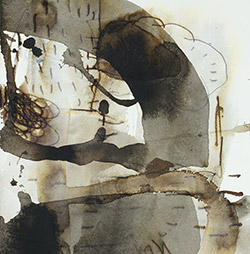

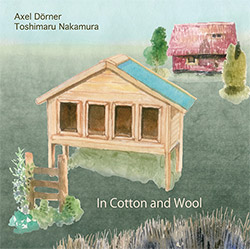


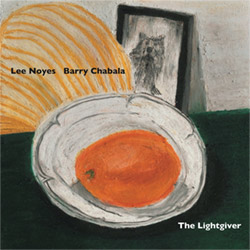

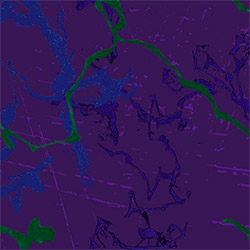





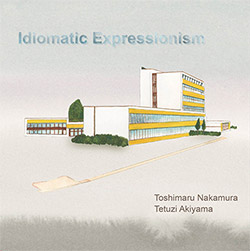
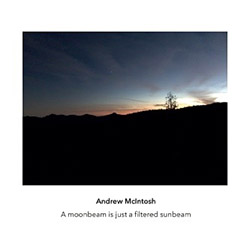


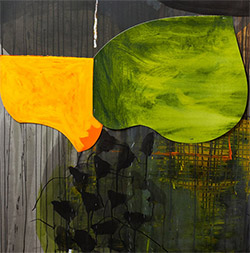


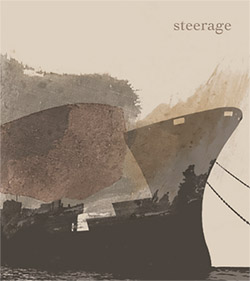







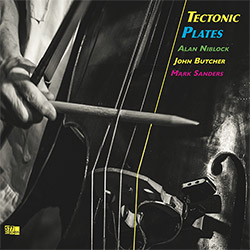


![+DOG+: The Light Of Our Lives [2 CDs]](https://www.teuthida.com/productImages/misc4/36009.jpg)


![Parker, Evan / Jean-Marc Foussat: Insolence [VINYL]](https://www.teuthida.com/productImages/misc4/36398.jpg)










![Deupree, Jerome / Sylvie Courvoisier / Lester St. Louis / Joe Morris: Canyon [2 CDs]](https://www.teuthida.com/productImages/misc4/36404.jpg)


![Eternities: Rides Again [CASSETTE]](https://www.teuthida.com/productImages/misc4/36247.jpg)

![Lopez, Francisco: Untitled (2021-2022) [2 CDs]](https://www.teuthida.com/productImages/misc4/36438.jpg)




![Eventless Plot | Haarvol: The Subliminal Paths [CASSETTE + DOWNLOAD]](https://www.teuthida.com/productImages/misc4/36232.jpg)







![Eventless Plot | Francesco Covarino: Methexis [CASSETTE + DOWNLOAD]](https://www.teuthida.com/productImages/misc4/36231.jpg)



![Das B (Mazen Kerbaj / Mike Majkowski / Magda Mayas / Tony Buck): Love [VINYL]](https://www.teuthida.com/productImages/misc4/36329.jpg)


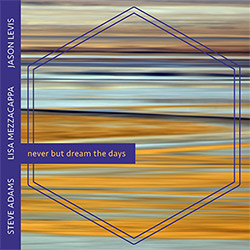
![Hemphill Stringtet, The: Plays the Music of Julius Hemphill [VINYL]](https://www.teuthida.com/productImages/misc4/36409.jpg)

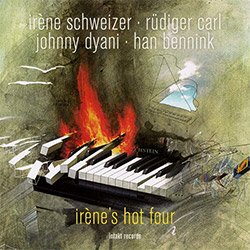







![Money : Money 2 [2 CDs]](https://www.teuthida.com/productImages/misc4/35894.jpg)




![Klinga, Erik: Elusive Shimmer [VINYL]](https://www.teuthida.com/productImages/misc4/36258.jpg)
![CHANGES TO blind (Phil Zampino): Volume 9 - I Wave on a Fine Vile Mist [CD + DOWNLOAD]](https://www.teuthida.com/productImages/misc4/36061.jpg)

![Wallmart / Rubbish: Asset Protection [split CD]](https://www.teuthida.com/productImages/misc4/35900.jpg)


![+Dog+: The Family Music Book Vol. 5 [2 CDs]](https://www.teuthida.com/productImages/misc4/35897.jpg)
![Kuvveti, Deli : Kuslar Soyledi [CASSETTE w/ DOWNLOAD]](https://www.teuthida.com/productImages/misc4/36107.jpg)

![Nakayama, Tetsuya: Edo Wan [CASSETTE w/ DOWNLOAD]](https://www.teuthida.com/productImages/misc4/36105.jpg)

![Brown, Dan / Dan Reynolds: Live At The Grange Hall [unauthorized][CASSETTE]](https://www.teuthida.com/productImages/misc4/36245.jpg)








![Palestine, Charlemagne / Seppe Gebruers: Beyondddddd The Notessssss [VINYL]](https://www.teuthida.com/productImages/misc4/36206.jpg)
![Palestine, Charlemagne / Seppe Gebruers: Beyondddddd The Notessssss [NEON GREEN VINYL]](https://www.teuthida.com/productImages/misc4/36207.jpg)

![Laubrock, Ingrid: Purposing The Air [2 CDs]](https://www.teuthida.com/productImages/misc4/35639.jpg)

![Yoko, Ono / The Great Learning Orchestra: Selected Recordings From Grapefruit [2 CDs]](https://www.teuthida.com/productImages/misc4/35841.jpg)









![Zorn, John / JACK Quartet: The Complete String Quartets [2 CDs]](https://www.teuthida.com/productImages/misc4/35609.jpg)

![Lonsdale, Eden: Dawnings [2 CDs]](https://www.teuthida.com/productImages/misc4/35480.jpg)



![Sorry For Laughing (G. Whitlow / M. Bates / Dave-Id / E. Ka-Spel): Rain Flowers [2 CDS]](https://www.teuthida.com/productImages/misc4/35985.jpg)

![Rolando, Tommaso / Andy Moor : Biscotti [CASSETTE w/ DOWNLOADS]](https://www.teuthida.com/productImages/misc4/36106.jpg)


![Electric Bird Noise / Derek Roddy: 8-10-22 [CD EP]](https://www.teuthida.com/productImages/misc4/35970.jpg)








![Elephant9 : Mythical River [VINYL]](https://www.teuthida.com/productImages/misc4/34624.jpg)



![Elephant9 with Terje Rypdal: Catching Fire [VINYL 2 LPs]](https://www.teuthida.com/productImages/misc4/35355.jpg)
![Deerlady (Obomsawin, Mali / Magdalena Abrego): Greatest Hits [VINYL]](https://www.teuthida.com/productImages/misc4/34876.jpg)







![Surplus 1980: Illusion of Consistency [CD]](https://www.teuthida.com/productImages/misc4/35069.jpg)
![Staiano, Moe: Away Towards the Light [VINYL + DOWNLOAD]](https://www.teuthida.com/productImages/misc4/35037.jpg)
![Coley, Byron: Dating Tips for Touring Bands [VINYL]](https://www.teuthida.com/productImages/misc4/17906.jpg)

![Lost Kisses: My Life is Sad & Funny [DVD]](https://www.teuthida.com/productImages/misc4/lostKissesDVD.jpg)